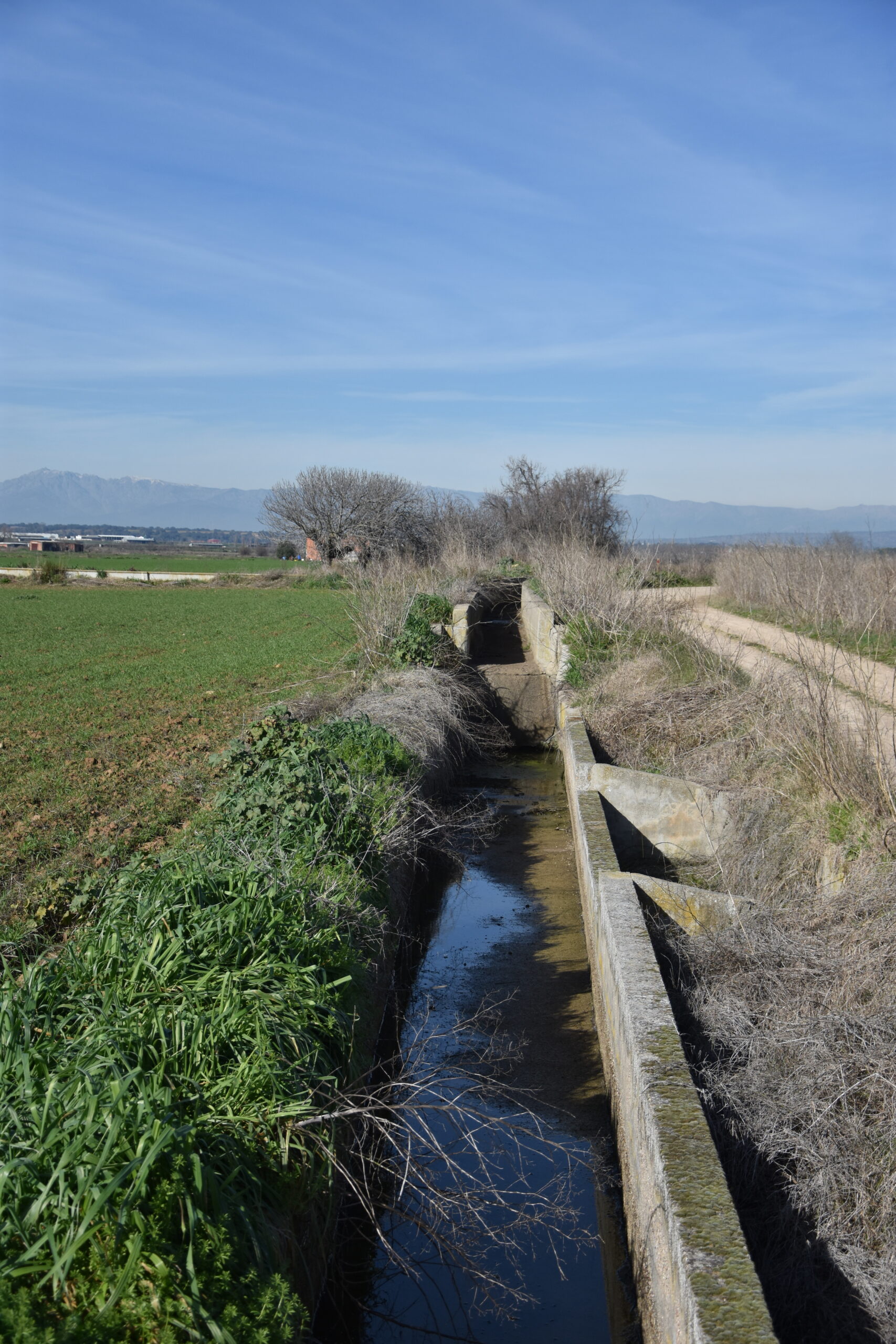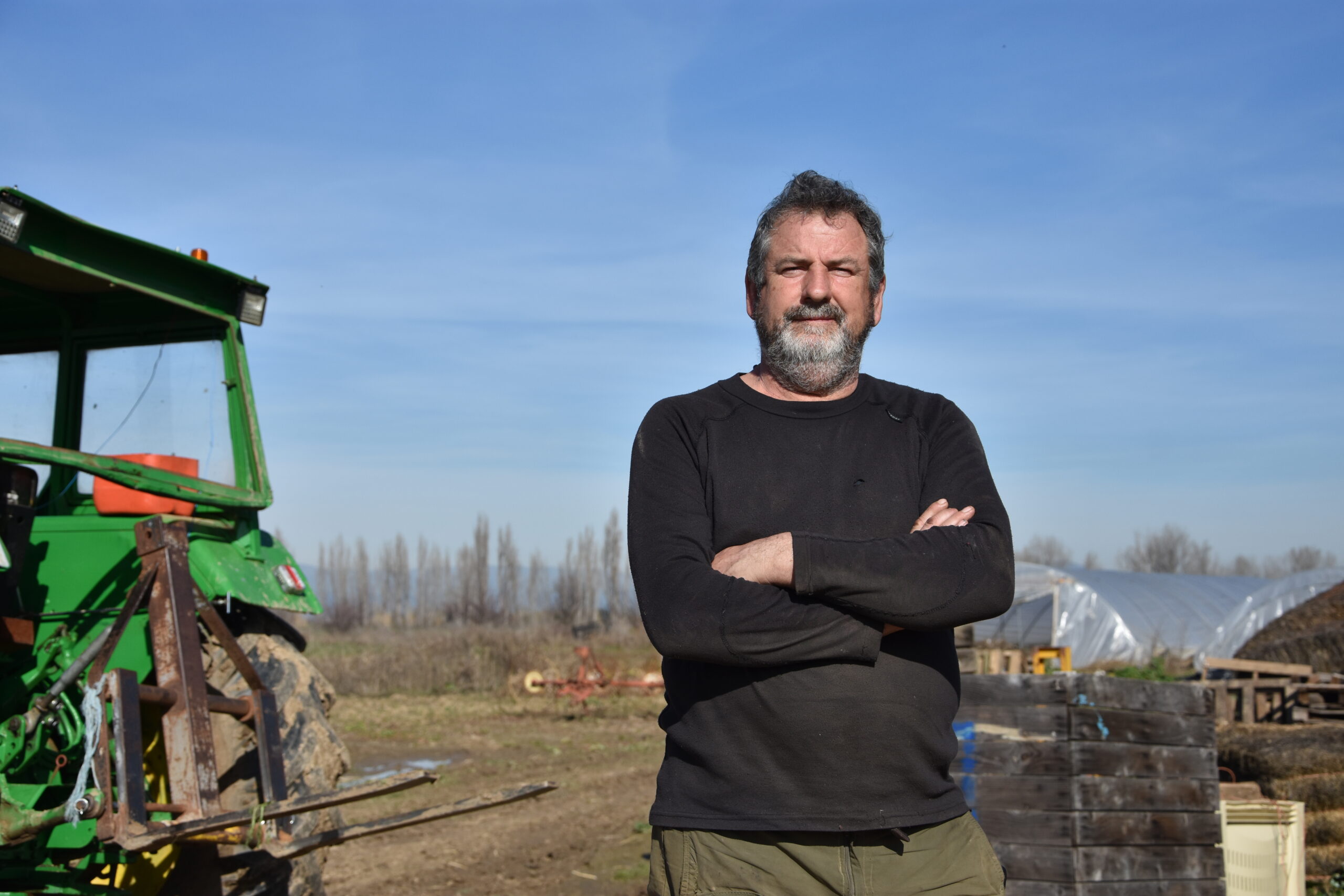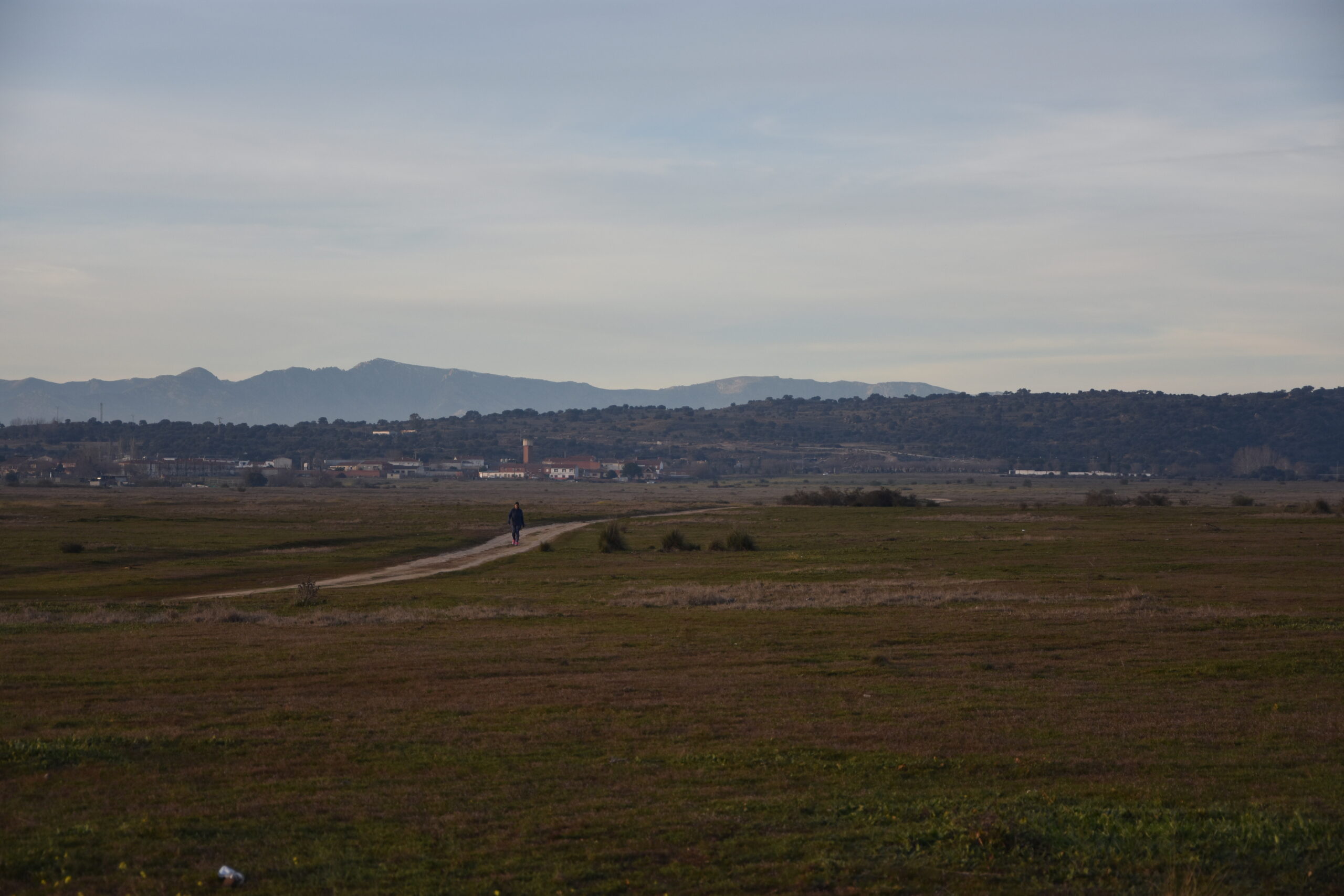The AI boom is driving a need for huge data centres that consume vast volumes of water and energy. In the face of growing resistance, big tech companies are looking for new regions to build them in. Can a country like Spain, in the midst of a climate emergency, take this gamble? Meta and other internet giants think so.
When Aurora Gómez was 15, rumours started to sweep through her village in central-southern Spain that an airport would be built on nearby farmland. It was land that had been privately owned, and her grandfather had been one of the farmers who for decades had worked it. The rumours turned out to be true. The government of Castilla-La Mancha, a region in central Spain, expropriated vast swathes of arable land to make room for the airport, and so the Gómez family took it to court. They eventually won the trial and received fair economic compensation, but it was too late: construction of the airport was already well underway. Today, the airport is a white elephant: no planes take off from there.
The government of Castilla-La Mancha had declared the airport to be a Project of Singular Interest – a legal formula for projects the government believes will be of value, and which, when applied, helps facilitate their implementation. These projects, held up as indispensable economic drivers, are difficult to challenge.
Gómez is now a digital and environmental rights activist, and she regularly recalls the fight over the airport when thinking and speaking about another major development slated for her region: a new data centre for Meta, to be built in Talavera de la Reina, 200 kilometres north of Gómez’s childhood home. “My interest in this comes because I have already lived this,” she says.
Meta first confirmed its plan to spend 1.1 billion euros on a data centre in 2022. According to details released last year, the land allotted for the development would cover 191,000 hectares. Like the airport, the government of Castilla-La Mancha has labelled it a Project of Singular Interest.
While data centres can vary in external appearance, their interiors hold few surprises. Rows and rows of servers running day and night are stacked on top of each other, evoking a kind of digital-age farm. Hyperscale data centres in particular – some of which can store hundreds of thousands of servers, and which are seen as business-critical – consume vast amounts of resources. Consumption is so great that the Netherlands, Ireland and Singapore have recently applied moratoriums on their construction. The European Commission has focused on hyperscale sites through its new energy efficiency directive, which will soon oblige owners of centres with a minimum installed capacity of 500 kW to report on their energy use.
The amount of electricity needed to power them is one concern. Another is the volume of water needed to cool them. Server racks stored in data centres need to be refrigerated to prevent the equipment from overheating. To do so, today’s most common technical solution is to use chilled water pipes to keep servers at a constant temperature.
Recurrent droughts
Determining how much water a data centre consumes is not easy. Until now, big tech companies have tended to either avoid publicising precise numbers, or have disclosed false data. In 2021, at the height of a national drought in the Netherlands, a journalistic investigation revealed that a Microsoft centre consumed four times more water than the company had announced.
The artificial intelligence (AI) boom is ramping up resource consumption. Generative artificial intelligence products, such as chatbots or apps for artificial content creation, require unprecedented computing power and therefore even more intensive cooling systems. Meta’s introduction in 2022 of a proprietary silicon chip for training AI models, as well as thousands of new graphics processor units (GPUs), is one such example. Research in recent months has pointed to a steady increase in demand for water from internet giants like Google and Microsoft.
Last year, authorities in Castilla-La Mancha published the first technical assessment of the Meta complex. Two months later the Confederación Hidrográfica del Tajo, the public body responsible for the management of the region’s water resources, issued a warning. Projections showed that the data centre would need 665.4 million litres of drinking water per year – a requirement that leaves very little water for anything else.

Ceramic mural depicting fishermen on the Tagus River, in the city of Talavera de la Reina, Spain / Pablo Jiménez Arandia
Spain, like other southern European countries, is experiencing a critical climatic situation. A lack of rainfall and rising temperatures have led to recurrent periods of drought. This is also true for the Tajo river basin, which irrigates part of Castilla-La Mancha, including Talavera de la Reina. Special drought action plans have been activated on several occasions over the last five years.
In response to warnings from the water supply agency, Meta presented a new plan that reduced the project’s water consumption by 24 per cent, including by using dry air coolers for the servers. But some believe that the latest numbers presented by the company are still far from satisfactory.
Miguel Ángel Hernández, spokesperson for Ecologistas en Acción, a regional NGO, points out that the calculations for water availability have been made in an “average scenario”, taking into account recent periods of both drought and abundance. “But it turns out that we are heading towards a scenario in which there are fewer and fewer resources available in the Tajo basin,” he says, “and in which crisis situations, due to episodes of high temperatures or low rainfall, are becoming more and more serious.”
Still, however, the regional government remains on board with the plan. It presented an environmental impact assessment of the project in March, stating that the expected water consumption was “adequate” for the area. Hernández hit back, pointing to the potential for extreme drought to hit the region in the coming years. “How will the problems that arise then be solved?” He believes that the “water consumption of the project takes Talavera [de la Reina]’s water supply capacity to the limit.”
Going south
Susan Schaap lives in Zeewolde, a small town in the Netherlands. She first heard about Meta’s planned data centre in her village during a video call organised by her local municipality, which was attended by some 50 councillors and neighbours. Echoing Gómez’s childhood experience, they were told the complex would occupy a substantial plot of land previously used for agriculture.
Meta’s envoys had already been negotiating with the local authorities for months by the time Schaap and her neighbours learned of the plans. She recalls the unease they felt as a result of the lack of transparency. “Meta said that community participation was important, but in the meantime, they hid everything under the table.”
If we are going to pay for this, as a citizen I have something to say.
Its size – and everything that came with that – was a major concern. It would be the largest data centre ever built in the Netherlands, and its high energy demand turned a majority of local residents against it. “If we are going to pay for this, as a citizen I have something to say,” the activist said. Schaap led a neighbourhood movement against the project – only this time, they scored a major victory. Meta was forced to cancel the development.

Water channelling of the Alberche river, a tributary of the Tagus, in the vicinity of the site where Meta will build its new data centre in Spain / Pablo Jiménez Arandia
Due to similar resistance movements in places like Chile, Ireland, Mexico, and Singapore, big tech companies have needed to look for new land on which to build these complexes.
Those eyeing Europe are increasingly looking to the south of the continent, where, due to factors including a lack of public debate and an eagerness for foreign investment, governments are more receptive to such projects. Portugal has become one of the fastest-growing markets in this industry, while in Spain, Google and Amazon have also built new data centres. In February, Microsoft announced a multi-million dollar investment in the country that will include the construction of several such complexes.
This echoes a similar trend in the Americas, where a backlash against data centres in the US is pushing companies to strike deals with Latin American governments. The Mexican state of Querétaro, at high risk of drought due to the effects of climate change, could soon host one of the biggest data centre hubs in the continent.
Ana Valdivia is a researcher at the Oxford Internet Institute (OII) and studies the impacts of the industry in the Global South. Valdivia anticipates that in parallel to the expansion of the sector, citizen protests will also grow, especially in countries like Spain that are already subject to extreme weather events. “When people become aware of the real impact of these infrastructures, there will be more resistance,” she says.
Meta today has 23 data centres around the world, most of them in the United States, but its project in Spain – which will become the southernmost of its centres in Europe – exemplifies this trend well. “Data is a problem for every big tech company, so they are all looking where to build,” explains a former Meta data centre design engineer, who worked at the company for six years. The engineer, who requested anonymity, says that finding areas “that are receptive [to data centres]” is “the bottom line” for companies.
When water is scarce
On a sunny January morning, the snow-capped Sierra de Gredos can be seen from Luis Miguel Pinero’s farm. Just behind this mountain range north of Talavera de la Reina is the source of the Alberche river. It irrigates Pinero’s crops. Soon, Meta’s data centre will also be drawing water from it.
Leaning on a wooden plank, Pinero explains how in recent years the area has suffered several water supply restrictions. When the Alberche’s flow wasn’t sufficient, water was diverted from the much more polluted Tajo. “That water is of no use to me”, says the grey-bearded Pinero, who produces small quantities of organic tomatoes and other vegetables.

Luis Miguel Pinero, farmer, on the farm he owns near Talavera de la Reina, Spain / Pablo Jiménez Arandia
Pinero is less fearful this year because “it has rained very well”. But as he explains, the volume of rain over set periods is only one indicator of climate health; the other is the consistency of weather patterns. “It is raining more and more erratically,” he says. “Climate change here is noticeable.” The water supply restrictions that have affected his farm in recent years have occurred mainly at the end of August and September, when the reserves of the Alberche have not been sufficient.
With an unemployment rate of 24 per cent, a decline in population in recent decades and neglect by the local and regional governments, many in this region see Meta’s investment as a possible salvation.
The irrigation limitations imposed by local authorities have compounded the more general worsening in water quality. Due to drought, water use is rationed to certain days of the week. This has led to a decrease in the number of crops, such as cabbages, that are harvested around that time of year. “If you are caught in August with little water, it is problematic,” he says. “It is a period when they [cabbages] are still small.” The same goes for late summer tomatoes.
Despite the anxiety farmers like Pinero are experiencing as a result of changing weather conditions, there is practically no public opposition to Meta’s new data centre in the region. Pinero is sceptical about the benefits of the project for the local population, but he believes that both local politicians and the company have managed to keep any negative effects of the project out of public debate.
“People are hopeful because it’s going to bring jobs – this kind of project is supposed to bring that, isn’t it?” the farmer asks, noting that the region is among the most economically depressed in Spain. With an unemployment rate of 24 per cent, a steady decline in population in recent decades and sustained neglect by the local and regional governments, many in this region see Meta’s investment as a possible salvation.

View of the land where Meta’s next European data centre will be located, in Talavera de la Reina, in the province of Toledo, Spain / Pablo Jiménez Arandia
“How many more can we take on?”
Big tech companies have taken note of concerns about water and are investing heavily in compensatory measures for many of the aquifers they use. These initiatives, according to industry estimates, would allow them to put more water back into the systems by 2030 than they consume.
However, other voices believe that it is time to rethink the construction of such resource-intensive projects altogether. “We have to convey to society that all of this [data], which seems so ethereal, has a physical part,” explains Begoña Valero, a conservation technician with the NGO SEO Birdlife, noting the “very high [resource] consumption” of the centres. She has followed the different evaluation phases of Meta’s complex in Talavera since planning began more than two years ago. “How many more data centres can we take on? Maybe we need to rationalise the use of these tools.”

Aurora Gómez, digital and environmental rights activist, in Madrid, Spain / Pablo Jiménez Arandia
Aurora Gómez agrees that it is time to rethink how many more data centres we actually need. A few months ago she created the initiative Tu Nube Seca Mi Río (“Your cloud dries my river”) to raise awareness about the harmful consequences of Talavera de la Reina’s and other data centres in Spain.
Gómez sees another parallel between the airport project 25 years ago and Meta’s data centre. Both targeted areas experienced population decreases, and in both, their promoters managed to link the arrival of these developments with the idea of social and economic progress. “They choose depopulated and ageing areas, where there is little or no opposition,” she claims.
